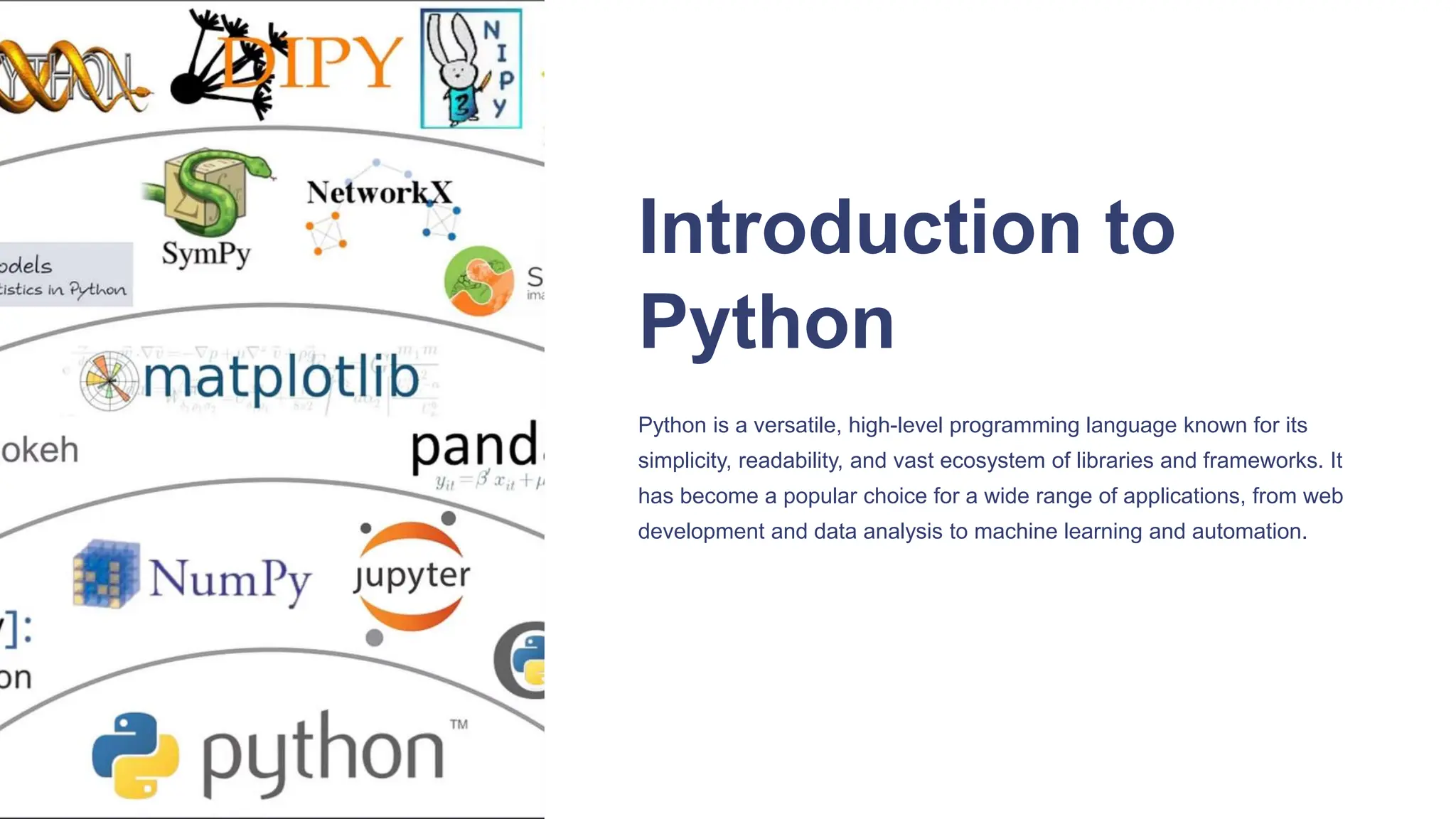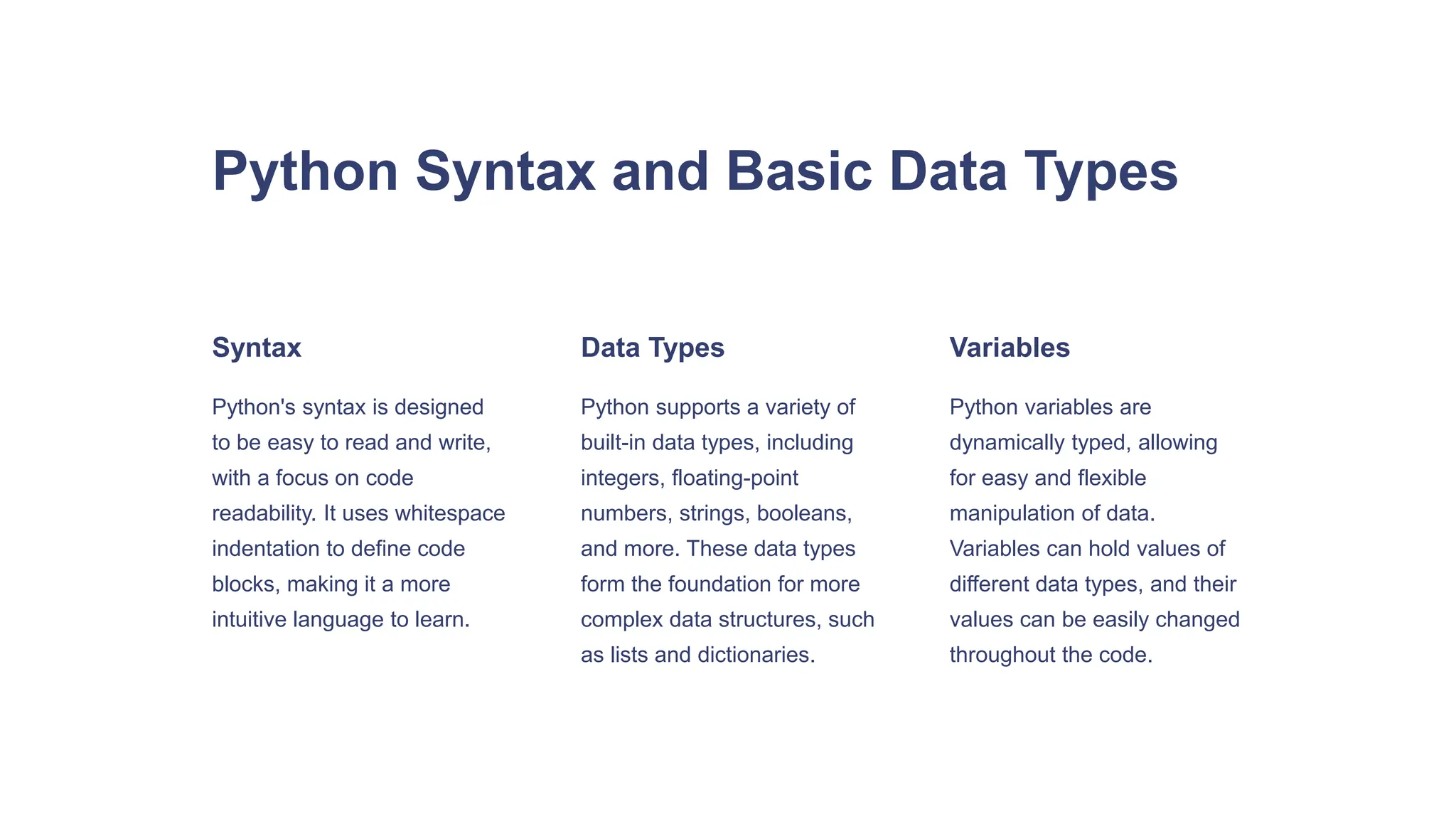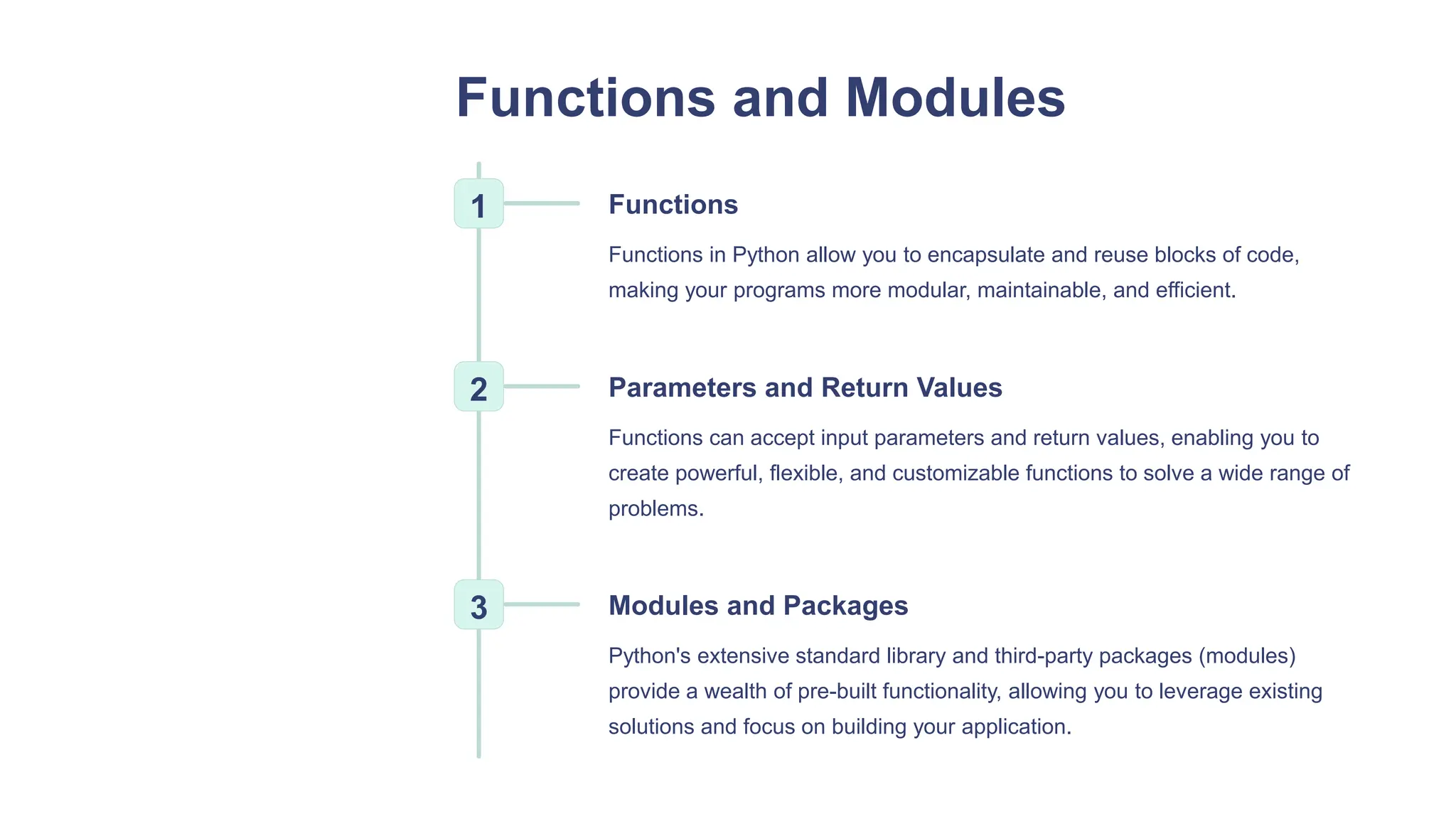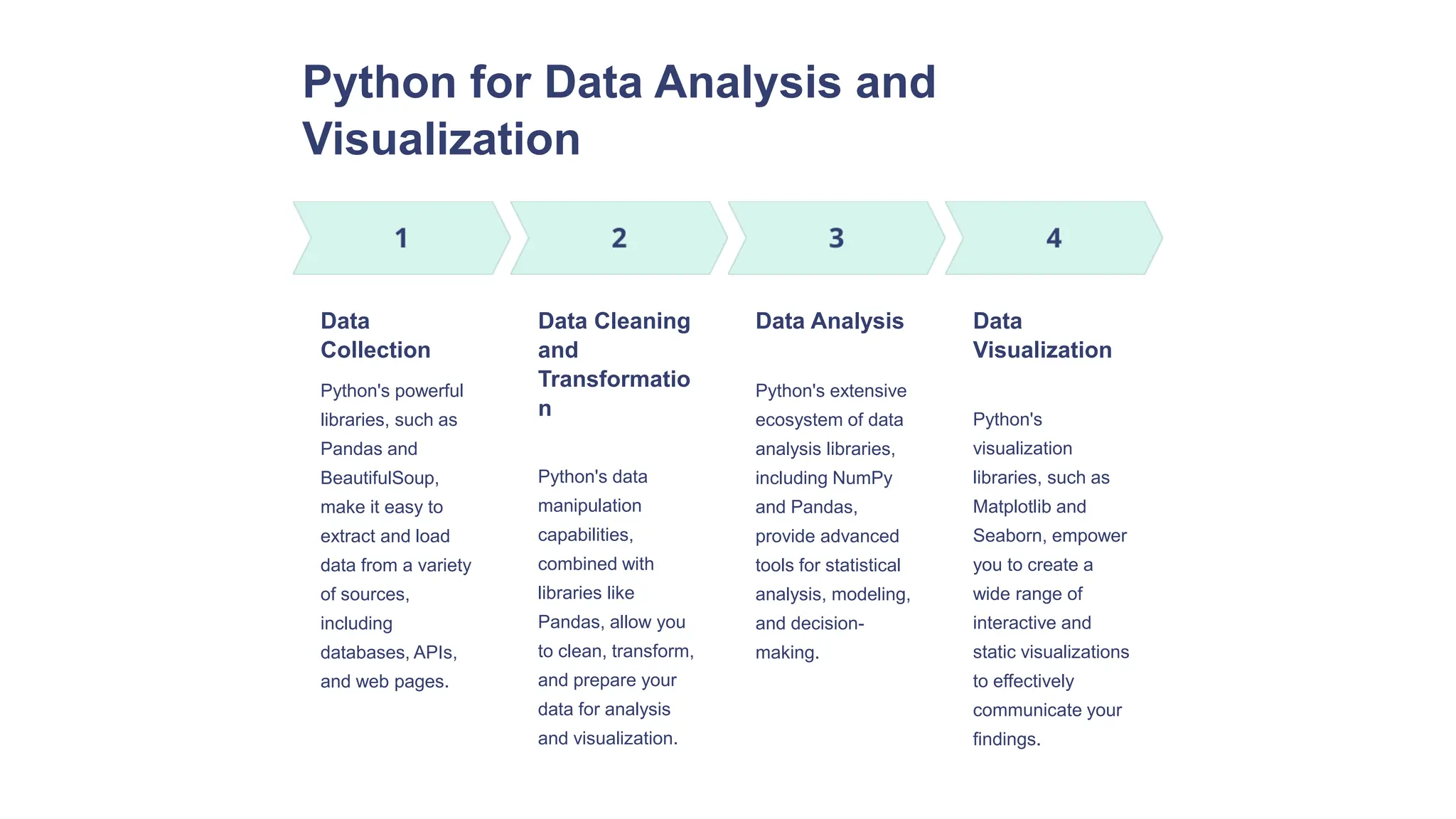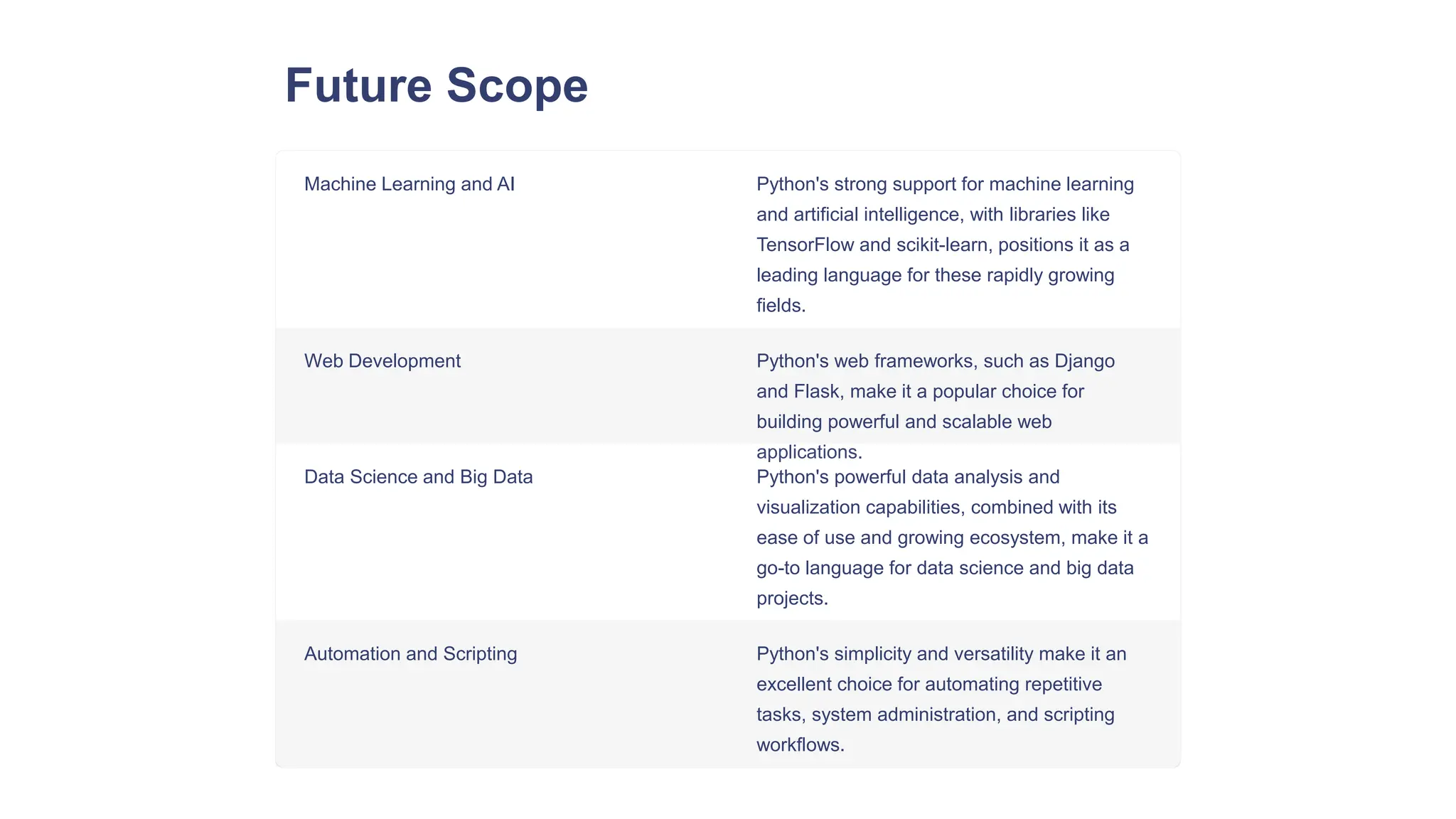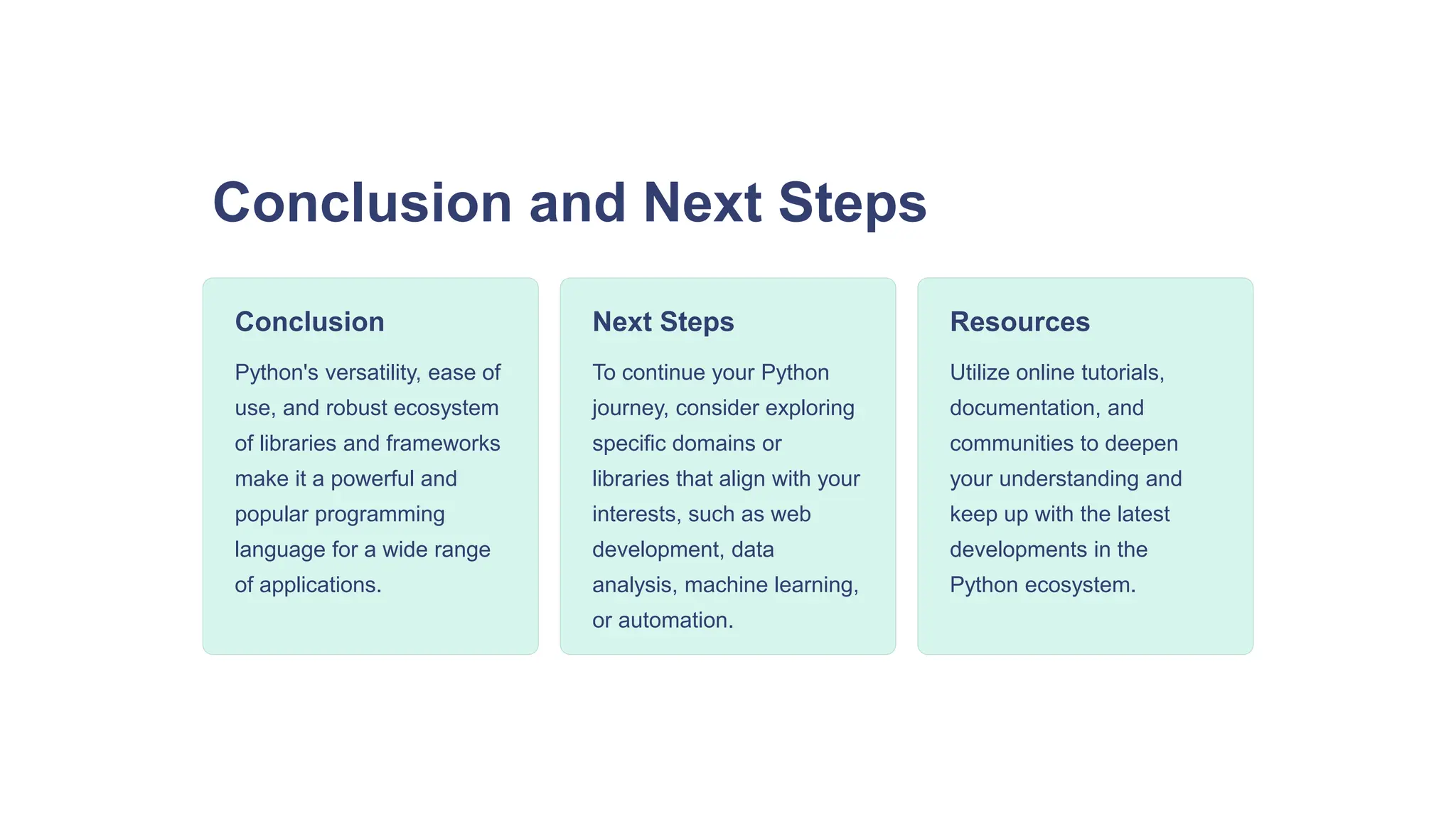Python is a versatile and high-level programming language favored for its simplicity and extensive libraries, suitable for various applications including web development and data analysis. Its syntax promotes readability, and it supports fundamental programming concepts like variables, control structures, functions, and object-oriented programming. Python's strong ecosystem includes libraries for data manipulation, machine learning, and automation, making it a popular choice for both beginners and experienced developers.
